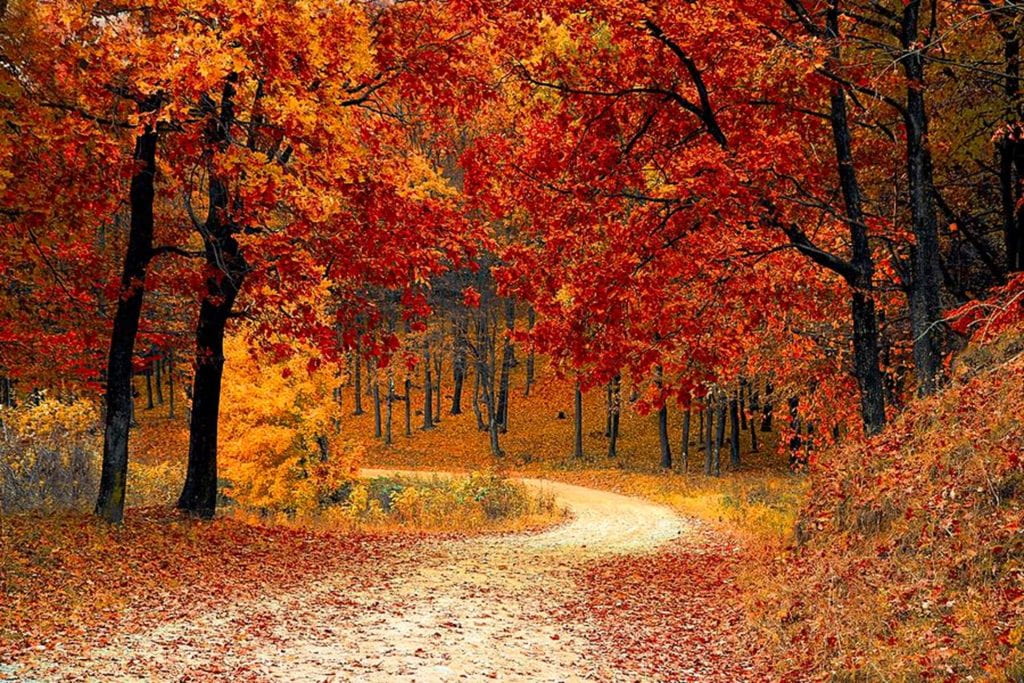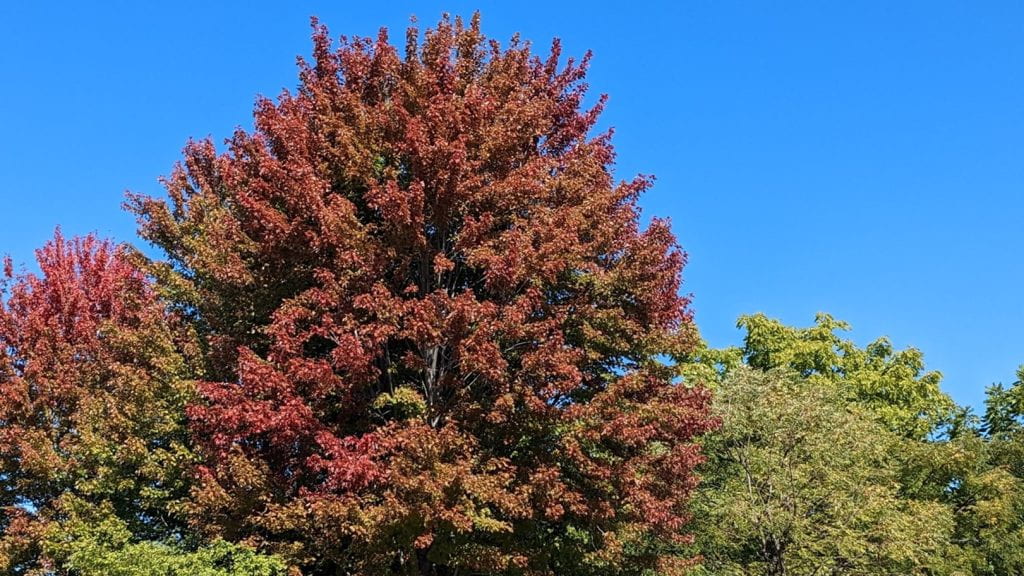
What can compare to the beauty of God, who is the source of all the beauty and perfection of creatures? Is it not from God that the flowers, birds, the stars, the moon, and the sun derive their luster and beauty?[1] —Vincent de Paul
On a recent November weekday morning, I was going through my usual routine, frantically hustling around my apartment, trying to get myself together and then out the door and into work. Back and forth from bathroom to bedroom to kitchen, collecting what I needed for my day—notebook, lunch bag, workout clothes, keys, phone, wallet. As I was just about ready to depart, I glanced at the clock and thought, If I run down the stairs and speed walk to the train, I just might have a chance to make it to the office reasonably on time.
All of a sudden, while I was shoving my laptop into my backpack, something made me pause and look up and out my third-floor bedroom window. As I think back to that moment now, it is surprising to me how much a mind is able to take in in just a split second. Outside of my apartment, the sun was bright and the air was clear. The leaves on the trees were translucent shades of orange and gold and were so close to the windowpane that I could almost make out the veins on each leaf. Through the branches and around the trees, below and across the street, the familiar trio of well-maintained Victorian homes were so vivid to me that I could see clearly the autumn wreaths that hung on their front doors and the mum plants that sat on their broad porch stairs. At that moment, standing in my bedroom and taking in the scene on the other side of my window, I was conscious that the world outside—the world that I was about to enter—was beautiful and inviting.
No sooner had that realization made itself known to me than a very slight breeze passed through the trees outside. In response, multitudes of leaves detached from their branches and began falling gracefully to the ground below. Then, as spontaneously as it began, the gentle rustling of the leaves ended.
The breeze had been natural, even predictable, and the falling leaves had had a beauty uniquely their own. Yet, in that moment, the feelings of joy and awe that had just welled up inside of me were pushed aside by something else. A different, surprising feeling rose up. I felt a sense of loss.
When I finally left my apartment a few minutes later, I continued mulling over the experience I had just had. Its sensations had seemed so much bigger and more profound than the simple moment called for.
Most of us learn, from witness or experience, that our lives, blessed and privileged as they may be, will contain some portion of sadness and pain. Sorrow tempers joy. Abundance and scarcity coexist. Light gives way to darkness. The truth is that these can be cold and bitter realities. The simple shedding of a leaf from a tree is nothing compared to the real suffering and loss taking place in the world.
But, as challenging and fearsome as these experiences are, they do hold potential for something good, for the growth of compassion and empathy and the strengthening of faith and resilience. The writer Kahlil Gibran put it this way: “The deeper that sorrow carves into your being, the more joy you can contain.”[2]
Vincent and Louise knew something of both the joys and sorrows in our world. DePaul’s Vincentian mission reflects this in our commitment to peace, justice, and equity and to upholding the dignity of all especially the underserved and underrepresented. We, the Vincentians of today, need to be reminded of these commitments and values, whether those reminders come from the words in our mission statement or from a chance encounter with the world’s beauty and brokenness through our window.
INVITATION FOR REFLECTION:
- Can you recall a time when you were struck by beauty or joy around you? What was this like for you?
- Has there been an experience in your life at DePaul, or elsewhere, that has been challenging for you but that has also provided you with a gift or has helped you become a more compassionate person?
Take a moment to honor the gifts that you took from your experiences.
REFLECTION BY: Tom Judge, Chaplain, Mission and Ministry
[1] Document 43, “Reflections on the Beauty of God,” n.d., CCD, 13a:160.
[2] Kahlil Gibran, On Joy and Sorrow, from The Prophet, p 28(New York: Knopf, 1923).

